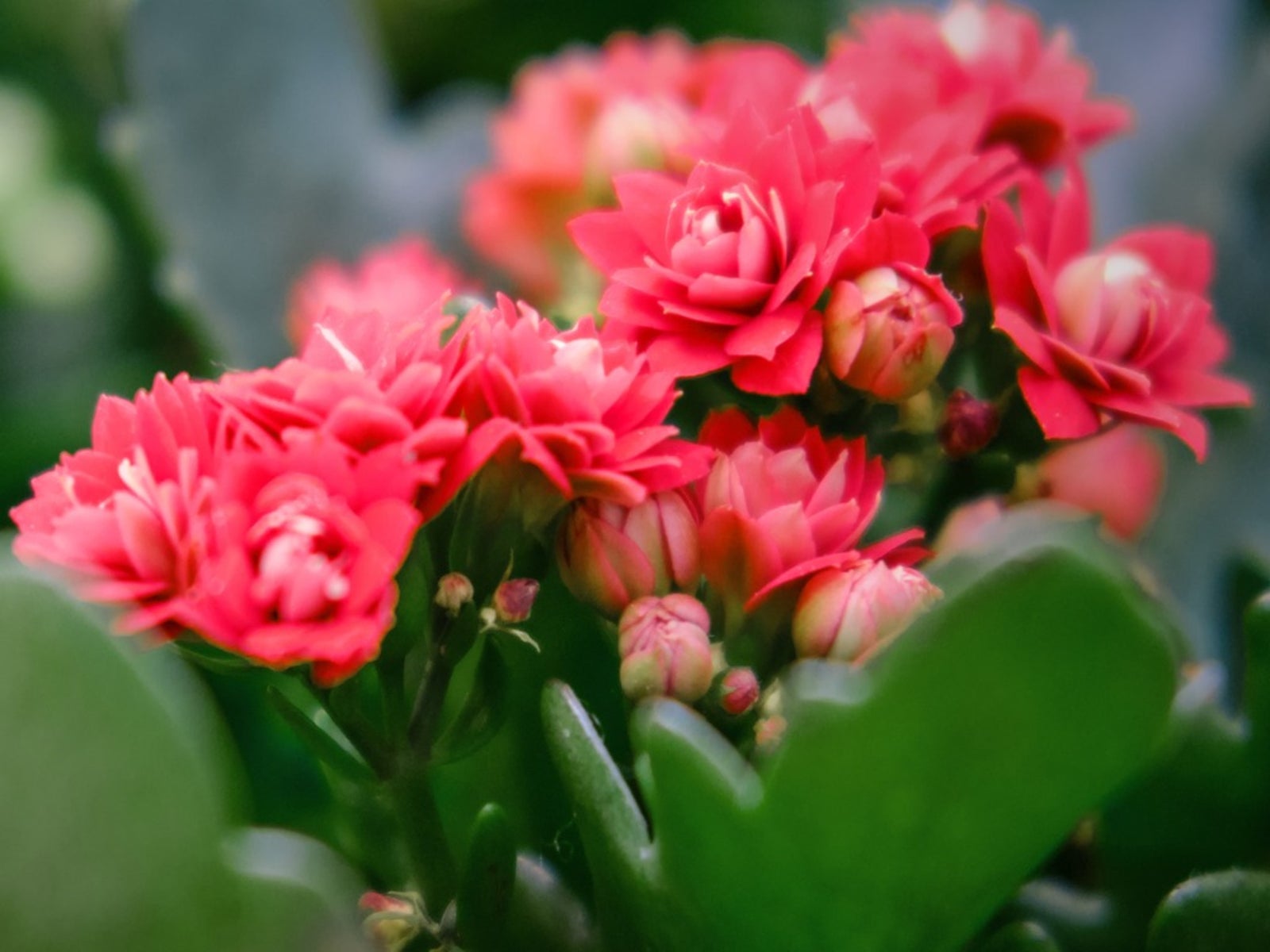Care For Flaming Katy: Growing Flaming Katy Indoors And Out
Flaming Katy is a lovely kalanchoe to add to your succulent collection. To enjoy the “flaming” red flowers, learn all there is to know about Flaming Katy plant care.

Flaming Katy: Complete Plant Care And Growing Guide
With a peculiar name like Flaming Katy, this unique kalanchoe is worth a look. When the holiday poinsettias have given their all and are now nothing more than a green houseplant, it’s time to introduce a pop of color into the home plantscape with a Flaming Katy kalanchoe.
What’s a Flaming Katy plant? “Flaming Katy '' is a florist kalanchoe (Kalanchoe blossfeliana) popular for its clusters of brightly colored, star-shaped flowers that bloom during the winter months. Most commonly grown as a houseplant, Flaming Katy is a reliable bloomer that is also hardy in USDA zones 10-11. Read on to learn about Flaming Katy plant care.
Quick Facts
- Botanical name:
- Kalanchoe blossfeldiana
- Height: 6-12 inches, 15-30 cm
- Spread: 6-12 inches, 15-30 cm
- Sun exposure: Indirect to partial sun
- Soil requirements: Moist, well-draining loam/sand
- Hardiness zones: USDA 10-11
- When to plant: Early spring or fall
Flaming Katy Care
Flaming Katy kalanchoe can be grown outdoors in USDA zones 10-11, but is more commonly grown as a blooming houseplant during the winter months. With proper care including lighting, water, temperature, humidity, soil, and fertilizer, your Flaming Katy will likely live to bloom yet again, in fact, this kalanchoe blooms every 6 months or so for 6 weeks or longer!
Light
Direct sunlight can burn the leaves of this delicate kalanchoe, so situate it in an area of indirect sunlight or partial shade.
Water
While kalanchoes like moist soil, overwatering can lead to root rot, so be sure that the top 1-2 inches (2.5-5 cm) of soil feels dry to the touch before watering.
Sign up for the Gardening Know How newsletter today and receive a free copy of our e-book "How to Grow Delicious Tomatoes".
Temperature & Humidity
Keep your Flaming Katy in an area of between 60-75 F (15-24 C) during the day and a bit cooler at night, about 50-60 F (10-15 C).
Soil
Kalanchoes thrive in soil that is well-draining, such as a cactus or succulent mix. Or make your own succulent soil using equal portions of coarse sand, perlite and potting soil.
Fertilizer
During the active growing season, use a balanced water-soluble fertilizer every 4-6 weeks.
Problems, Pests & Diseases
Kalanchoe can be afflicted with aphids, spider mites and mealybugs all of which can be treated with an application of Neem oil or insecticidal soap.
Resistant to most diseases, kalanchoe is susceptible to root rot. Be sure to use well-draining soil and allow the plant to dry out between waterings.
Pruning & Propagation
The only time you really need to prune kalanchoe is to remove spent blossoms or dead leaves.
Flaming Katy is easy to propagate by stem cuttings or offsets.
To propagate by stem cuttings, simply cut a 2-4 inch (5-10 cm) stem from the plant. Be sure to use a sterile pruner or knife. Remove the lower leaves and allow the cutting to callus by allowing it to dry for a day or so. Plant the callused end into well-draining potting soil, water lightly and wait patiently for root development.
To get another Flaming Katy plant using offsets is even easier. Look for small offsets or “pups” at the base of the plant. Remove the offset by cutting it off with a clean knife. Voila! You have a carbon copy of the parent plant. Follow the instructions as above for callusing the cut end and planting.
Repotting
Flaming Katy is a compact plant, only growing to about 6-12 inches (15-30 cm) both tall and wide. For this reason, repotting is rarely a necessity. However, even if you fertilize regularly during the growing season, most plants can benefit from a boost of fresh soil every couple of years, but it is unlikely that you will need to size up the container.
Varieties
There are approximately 125 species of kalanchoe, mostly originating from Madagascar and tropical regions of Africa. Flaming Katy (K. blossfeldiana) was discovered by Robert Blossfeld in Madagascar in 1926. He brought it to Europe where it rapidly gained popularity as a winter blooming houseplant.
Since then, breeders have expanded the selection of colors available and even introduced hybrids with 32 petals instead of the usual four.
Frequently Asked Questions
Will Flaming Katy Bloom Again?
Like poinsettias, kalanchoes need short days and long nights for bud development. To get your Flaming Katy blooming again, keep the plant in a dark closet for the majority of the day, only bringing it out to enjoy indirect sun early in the morning. After about 6 weeks of these enforced short days of about 14-16 hours of darkness, you should begin to see flower buds. At this time, place the plant back into an area of indirect light and wait for your Flaming Katy to burst into flower; about 12 weeks after starting the long night preparation.
Can Flaming Katy Be Planted Outside?
Yes, Flaming Katy can be grown outside in USDA zones 10-12. It can also be moved outdoors in the summertime in other zones but should be moved back indoors well before the first freeze for your area.
Is Flaming Katy a Succulent?
Yes, Flaming Katy is a succulent; a member of the stonecrop family Crassulaceae, native to Madagascar and part of tropical Africa.

Bonnie Grant is a professional landscaper with a Certification in Urban Gardening. She has been gardening and writing for 15 years. A former professional chef, she has a passion for edible landscaping.

